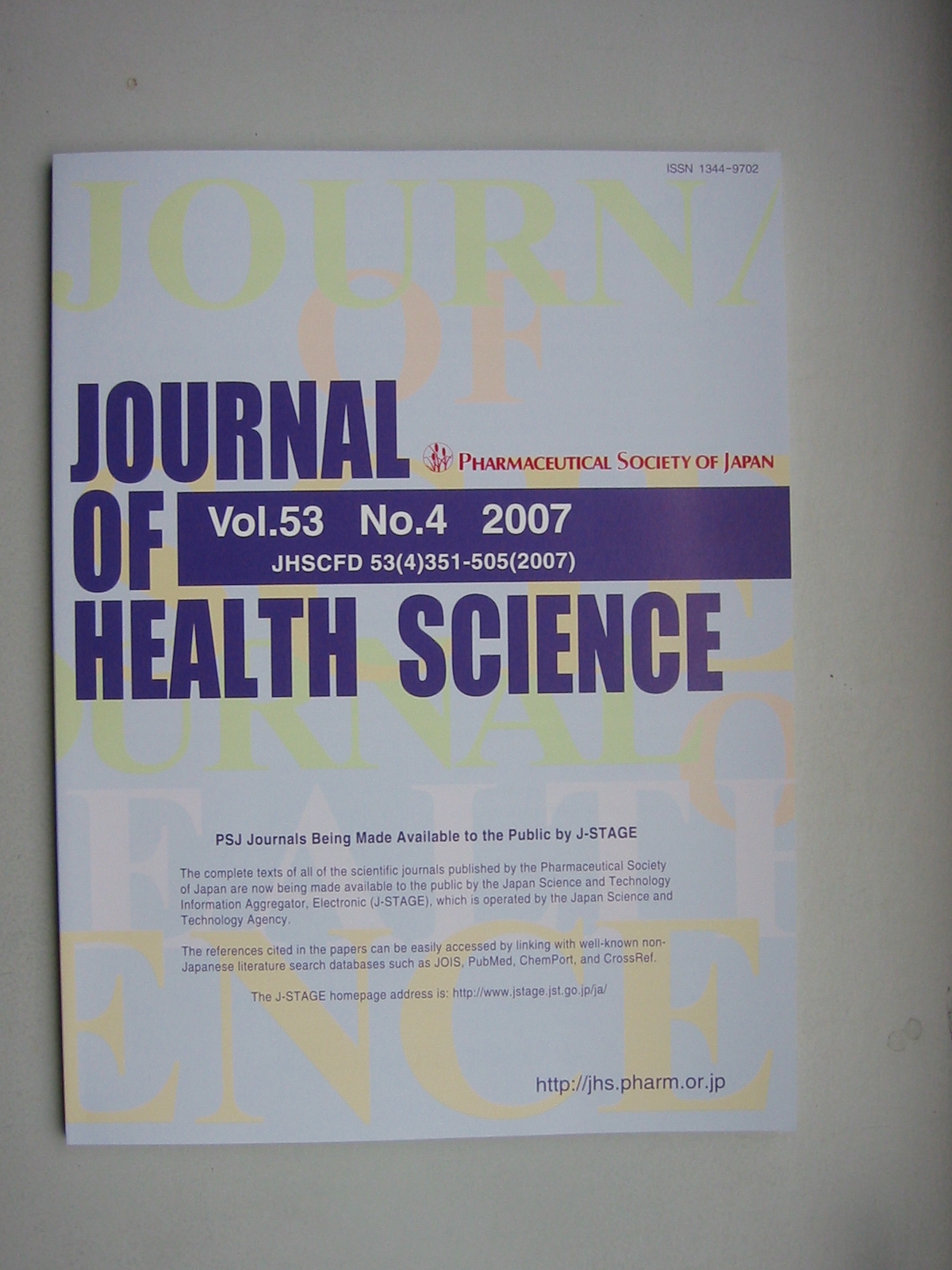Volume 48, Issue 2
Displaying 1-17 of 17 articles from this issue
- |<
- <
- 1
- >
- >|
MINIREVIEW
-
Article type: Minireview
2002Volume 48Issue 2 Pages 97-105
Published: 2002
Released on J-STAGE: April 01, 2002
Download PDF (247K)
REGULAR ARTICLES
-
Article type: Regular Article
2002Volume 48Issue 2 Pages 106-117
Published: 2002
Released on J-STAGE: April 01, 2002
Download PDF (2987K) -
Article type: Regular Article
2002Volume 48Issue 2 Pages 118-125
Published: 2002
Released on J-STAGE: April 01, 2002
Download PDF (152K) -
Article type: Regular Article
2002Volume 48Issue 2 Pages 126-129
Published: 2002
Released on J-STAGE: April 01, 2002
Download PDF (120K) -
Article type: Regular Article
2002Volume 48Issue 2 Pages 130-133
Published: 2002
Released on J-STAGE: April 01, 2002
Download PDF (223K) -
Article type: Regular Article
2002Volume 48Issue 2 Pages 134-139
Published: 2002
Released on J-STAGE: April 01, 2002
Download PDF (547K) -
Article type: Regular Article
2002Volume 48Issue 2 Pages 140-147
Published: 2002
Released on J-STAGE: April 01, 2002
Download PDF (624K) -
Article type: Regular Article
2002Volume 48Issue 2 Pages 148-153
Published: 2002
Released on J-STAGE: April 01, 2002
Download PDF (165K) -
Article type: Regular Article
2002Volume 48Issue 2 Pages 154-160
Published: 2002
Released on J-STAGE: April 01, 2002
Download PDF (167K) -
Article type: Regular Article
2002Volume 48Issue 2 Pages 161-167
Published: 2002
Released on J-STAGE: April 01, 2002
Download PDF (434K)
RAPID COMMUNICATIONS
-
Article type: Rapid Communication
2002Volume 48Issue 2 Pages 168-172
Published: 2002
Released on J-STAGE: April 01, 2002
Download PDF (158K)
RESEARCH LETTERS
-
Article type: Research Letter
2002Volume 48Issue 2 Pages 173-178
Published: 2002
Released on J-STAGE: April 01, 2002
Download PDF (153K) -
Article type: Research Letter
2002Volume 48Issue 2 Pages 179-185
Published: 2002
Released on J-STAGE: April 01, 2002
Download PDF (150K) -
Article type: Research Letter
2002Volume 48Issue 2 Pages 186-194
Published: 2002
Released on J-STAGE: April 01, 2002
Download PDF (143K) -
Article type: Research Letter
2002Volume 48Issue 2 Pages 195-200
Published: 2002
Released on J-STAGE: April 01, 2002
Download PDF (143K) -
Article type: Research Letter
2002Volume 48Issue 2 Pages 201-203
Published: 2002
Released on J-STAGE: April 01, 2002
Download PDF (166K) -
Article type: Research Letter
2002Volume 48Issue 2 Pages 204-207
Published: 2002
Released on J-STAGE: April 01, 2002
Download PDF (138K)
- |<
- <
- 1
- >
- >|
